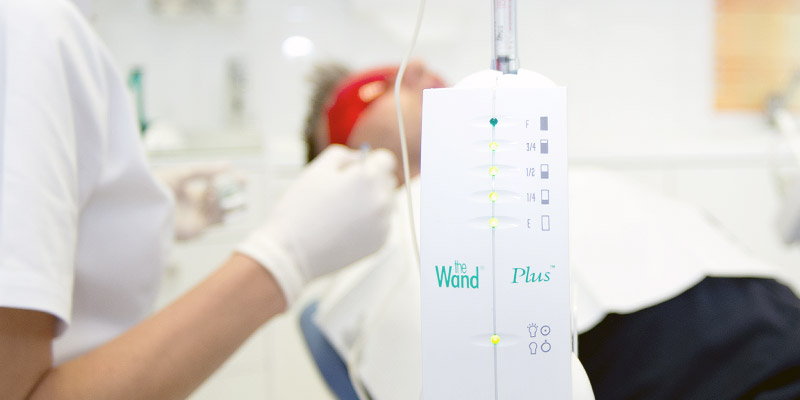Kraków: Lubostroń 22G lok. 7, +48 12 44 55 665 | Lipska 4 lok. 10, +48 731 704 731 | Wrocławska 53A, +48 731 704 787
For anesthesia in our clinic, we frequently employ an innovative method based on The Wand system. It's a modern, computer-controlled approach for administering painless dental anesthesia. The system consists of a small computer and a specialized handpiece that resembles a pen in appearance. The administration of anesthesia itself is done manually - the dentist places the handpiece against the patient's gum and, under microprocessor control, administers the anesthetic drug.

The computer continually informs about the successive stages of the drug penetrating the tissues and monitors the entire process. In this way, we anesthetize only the specific area that is to be treated, for example, a single tooth. There is no tissue expansion during this process, which is often experienced as varying degrees of pain. With The Wand, the fluid is infused at a speed that allows the tissues to absorb it in real-time. No high pressure is generated, thus avoiding the unpleasant sensation of gum expansion.
In traditional techniques, the waiting time for the anesthetic to take effect after the injection is around 10-15 minutes.
The application tips of The Wand resemble a pen, with a shorter or longer needle at the end. The special technique of guiding the tip into the tissues ensures that the patient does not feel its presence in the gum. This is because the anesthetic fluid is constantly introduced into the tissues as the needle is inserted. The fluid forms a kind of shield at the tip of the needle, called an "anesthetic shield." This means that the anesthetic substance reaches the tissues first, and only afterward does the needle approach the already anesthetized tissues. As a result, the needle moves within the already anesthetized tissues, and that's why the patient doesn't feel its presence.












